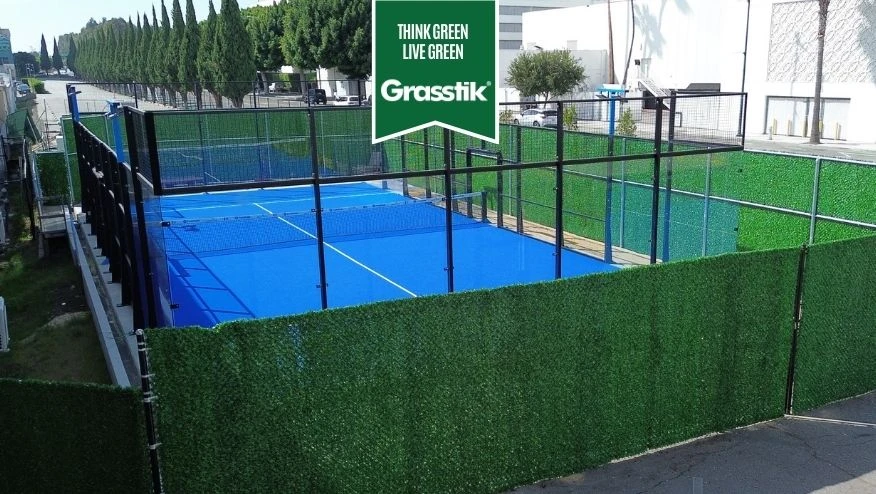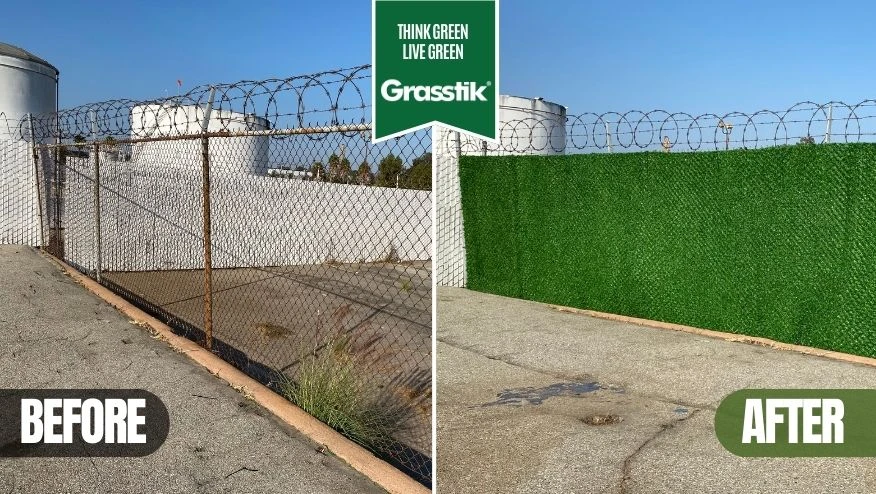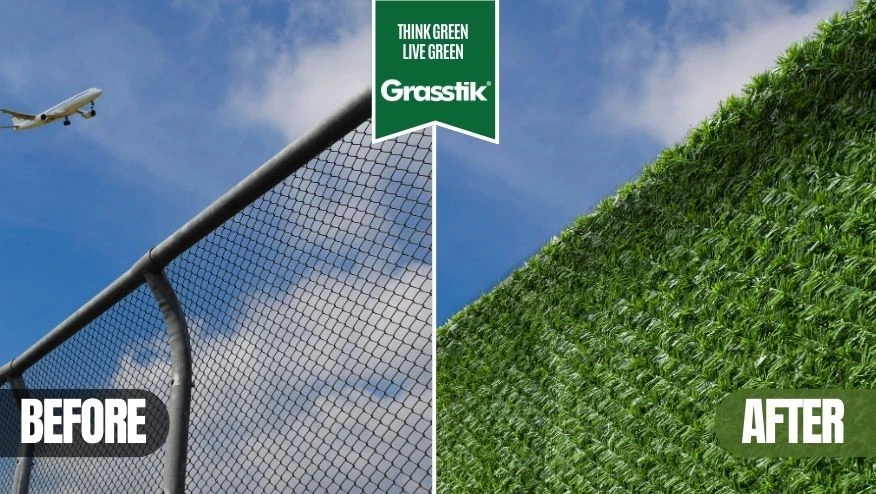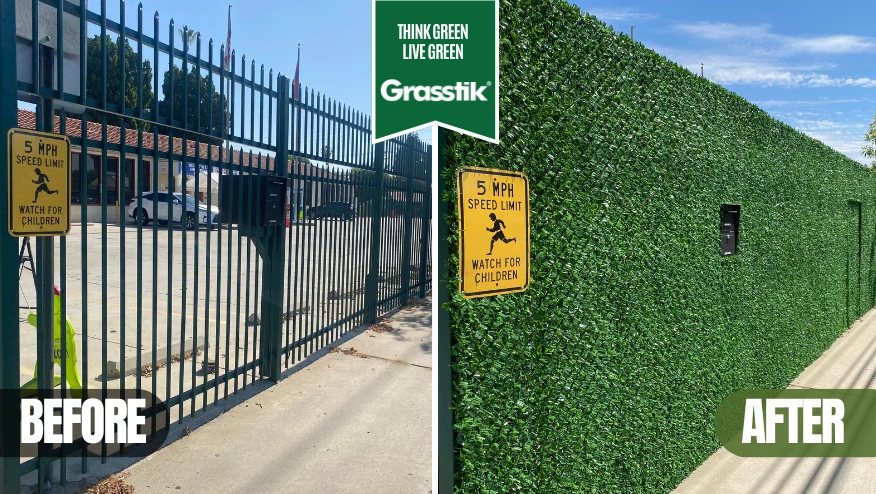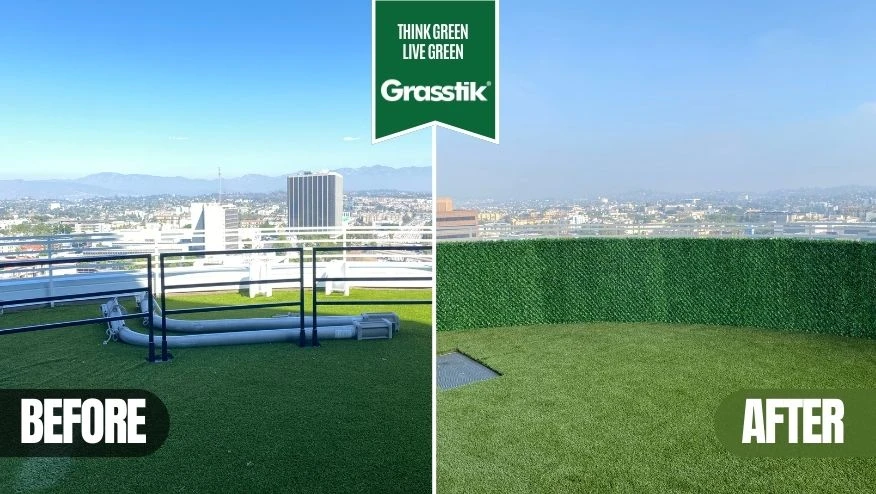
The privacy fence height you choose plays a crucial role in defining your property's privacy, security, and aesthetic appeal. Generally, the standard privacy fence height for backyards is between 6 to 8 feet. However, this can vary based on local zoning laws and Homeowners Association (HOA) regulations. A properly selected grass fence height not only ensures your outdoor activities remain private but also enhances the overall look of your home. It's essential to balance personal preferences with regulatory compliance for the most effective and appealing outcome.
How to Measure Privacy Fence Height?
Measuring your privacy fence heights isn't just about pulling out a tape measure; it's about ensuring your little oasis aligns with rules and regs while meeting your needs for a cozy, private haven. Start your measuring adventure at the base of the fence, right where it kisses the ground, and stretch all the way up to its tallest point. Remember, we’re keeping it real by measuring from the natural ground level – no cheating with raised beds or crafty landscaping! This method keeps everything above board and uniform, which is super important in fence-land. Keep an eye out for those sneaky slopes or dips that can play tricks on your fence’s height. Getting this right is a big deal – it’s not just about creating your perfect backyard getaway; it’s about staying on the right side of the law. No one wants a surprise fine or, worse, having to redo their beautiful fence. So, if you're scratching your head, wondering if it's too tall or short, it might be worth a chat with your local zoning guru or a fencing pro.
Why is Privacy Fence Height Important?
Ever thought about why the height of your privacy fence really matters? It's not just a random number! The right height can transform your backyard into that dreamy, secluded spot you've always wanted. Imagine lounging in your garden, away from nosy neighbors and the outside world – that’s the magic of a well-chosen fence height. It's also your first line of defense, keeping your space safe from uninvited guests (both the two and four-legged kinds) and making sure your kids and fur babies have a secure place to play. But it's not all about playing fortress; your fence needs to be a good neighbor too. It should blend in nicely with your home’s style and the neighborhood vibe. A towering fence might give you all the privacy you want but could block out that lovely afternoon sun or the view of that gorgeous old oak tree in your neighbor's yard. Finding that sweet spot with your fence height means you get your cozy, private nook without turning it into a fortress of solitude.
Advantages of Taller Fences for Privacy
Opting for taller fences can significantly boost privacy, a crucial aspect for many homeowners. These structures effectively block the line of sight from neighboring properties and public areas, creating a secluded haven in your yard. For properties situated near taller buildings or along busy streets, an increase in fence height for privacy can provide a much-needed barrier against prying eyes and reduce noise pollution. Additionally, taller fences add a layer of security, deterring potential intruders and offering a safe space for children and pets to play.
Pros and Cons of Shorter Fence Designs
Shorter fence designs, while offering limited privacy and security, bring several advantages. They preserve the open feel of a property, maintaining sightlines and not obstructing scenic views. This can be particularly beneficial in picturesque neighborhoods or areas where maintaining a connection with the surrounding environment is desired. Moreover, lower fences foster neighborly interactions and contribute to a friendly community atmosphere. However, the trade-off is reduced seclusion and potentially less effective containment of pets and children, a factor that needs careful consideration. By using tall grass fence panels, you might counter some of the cons of shorter fence designs.
What is the Privacy Fence Height Limit?
The privacy fence height limit is predominantly dictated by local civil codes and regulations, which are designed to ensure that residential and commercial fencing harmonizes with community standards and safety requirements. These laws vary significantly from one locality to another, making it crucial for homeowners to understand the specific rules in their area. While the general standard for privacy fences often ranges between 6 to 8 feet, particularly in residential areas, some regions may allow for extensions or higher constructions with the acquisition of special permits. It's important to note that exceeding these height limits without proper authorization can lead to legal complications, including fines or orders to modify or remove the fence. Therefore, understanding and adhering to these regulations is not only a matter of compliance but also one of respecting community aesthetics and safety.
Researching Your City's Fence Height Restrictions
When planning to install or modify a fence, researching your city’s specific privacy fence height extension rules is essential. This task involves consulting local municipal resources, such as city or county websites, where zoning codes and building permits are often accessible. These resources provide detailed information about permissible fence heights in various parts of the city, including distinctions between front and backyards. Additionally, state building codes might offer overarching guidelines, but local ordinances typically take precedence. It’s a good practice to directly contact local building departments for clarification, as they can provide the most current and relevant information. This step is crucial not only for legal compliance but also for maintaining good relations within your community.
Navigating Homeowners Association (HOA) Guidelines
For homeowners living in communities governed by a Homeowners Association (HOA), understanding, and complying with the HOA's guidelines is just as important as following municipal regulations. HOAs often have their own set of rules regarding fence heights and styles, which can be more restrictive than local laws. These guidelines are typically outlined in the HOA's covenants, conditions, and restrictions (CCRs). Reviewing these documents and consulting with the HOA board can provide clarity on what is allowed in terms of extending fence height for privacy. Failing to adhere to these rules can result in fines or being required to alter or remove non-compliant fencing, making it essential for homeowners to be well-informed about both local and HOA regulations.
Standard Fence Height
When it comes to fencing, there's no one-size-fits-all. The standard fence height and standard height of privacy fence varies, depending on whether you're marking the boundary of a cozy suburban home or a sprawling commercial property. For homeowners, it's about striking a balance between creating a private oasis and keeping up with the Joneses in style. Location plays a big part too – what works in a bustling city might not fit in tranquil countryside. Choosing the right height is a mix of meeting privacy needs and ensuring your fence looks like it belongs.
Residential Standard Fence Height
In the world of white picket dreams and backyard barbecues, residential standard fence height plays a big role in setting the scene. It's not just about privacy; it's about creating a harmonious look for your home sweet home. There's a bit of variety here, with different rules for what faces the street and what surrounds your private retreat.
Standard Backyard Fence Height
In the sanctuary of your backyard, the standard backyard fence height typically ranges from 6 to 8 feet. This range is the sweet spot for keeping your weekend BBQs private while still feeling connected to the great outdoors. It’s about having your own space without building a fortress.
Standard Front Yard Fence Height
Up front, it's a different story. The standard front yard fence height usually skews shorter – think 3 to 4 feet. This is all about curb appeal, making a welcoming first impression while still marking your territory. It’s a friendly wave to the neighbors, not a fortress wall.
Standard Commercial Chain Link Fence Height
When it comes to commercial spaces, the standard commercial chain link fence height is often taller, driven by security needs. These fences need to be tough and tall enough to mean business, safeguarding everything from warehouses to playgrounds.
Standard Wood Fence Height
The standard wood fence height marries classic charm with practicality. Wood fences bring a traditional touch to your property while keeping your private life, well, private. They're like the comforting hug of a fence world.
Standard Chain Link Fence Height
The go-to for practicality, the standard chain link fence height strikes a balance between keeping things secure and not feeling too closed off. It's the utility player in the fencing game, versatile for various settings.
Standard Metal Fence Height
In the metal fence category, standard metal fence height is influenced by its dual role in security and style. These fences need to be sturdy enough to stand guard but also blend in with their surroundings.
Standard Vinyl Fence Height
For a fuss-free option, standard vinyl fence height offers a neat solution. Vinyl fences are the low-maintenance heroes of the residential world, providing enough privacy without demanding too much in return. They're the easy-going neighbors in the fence family.
Maintenance and Longevity of Tall Fences
When it comes to maintenance-free privacy fences, the reality is that even the lowest maintenance options need some care to ensure their longevity. Tall fences, in particular, require a consistent maintenance routine. This typically includes regular cleaning to prevent mold and mildew buildup, checking for any damage or wear, especially after severe weather, and ensuring that the fence is stable and secure. For wooden fences, this might involve staining or sealing every few years. Metal fences might need rust treatment, while vinyl fences usually need less upkeep but should be inspected for cracks or brittleness.
Upkeep Challenges for Higher Fences
The quest for the best fence for privacy and low maintenance often leads to taller fences, which present unique upkeep challenges. Their height can make them more susceptible to wind damage and may complicate routine maintenance tasks like painting or repairs. Ensuring stability is key – the foundation and posts of higher fences need to be checked regularly for signs of weakness or rot in wood, rust in metal, or cracks in vinyl. Additionally, taller fences can be more challenging to clean due to their size, requiring specialized equipment or professional help.
Material Durability and Weather Resistance
Selecting materials for a wind-resistant privacy fence or a fire-retardant fence is critical, especially in areas prone to harsh weather conditions. For instance, metal or vinyl fences are often more durable and require less maintenance than wood. However, they should be specifically designed to resist wind damage. UV-protected privacy fences are also vital in sunny climates to prevent fading and maintain the fence’s aesthetic appeal over time. The choice of material not only affects the fence’s durability and maintenance needs but also its ability to withstand specific environmental challenges.
In summary, understanding and choosing the right privacy fence height involves a careful consideration of local regulations, material choices, and personal preferences. By balancing these factors, you can create a functional and aesthetically pleasing boundary for your property.

